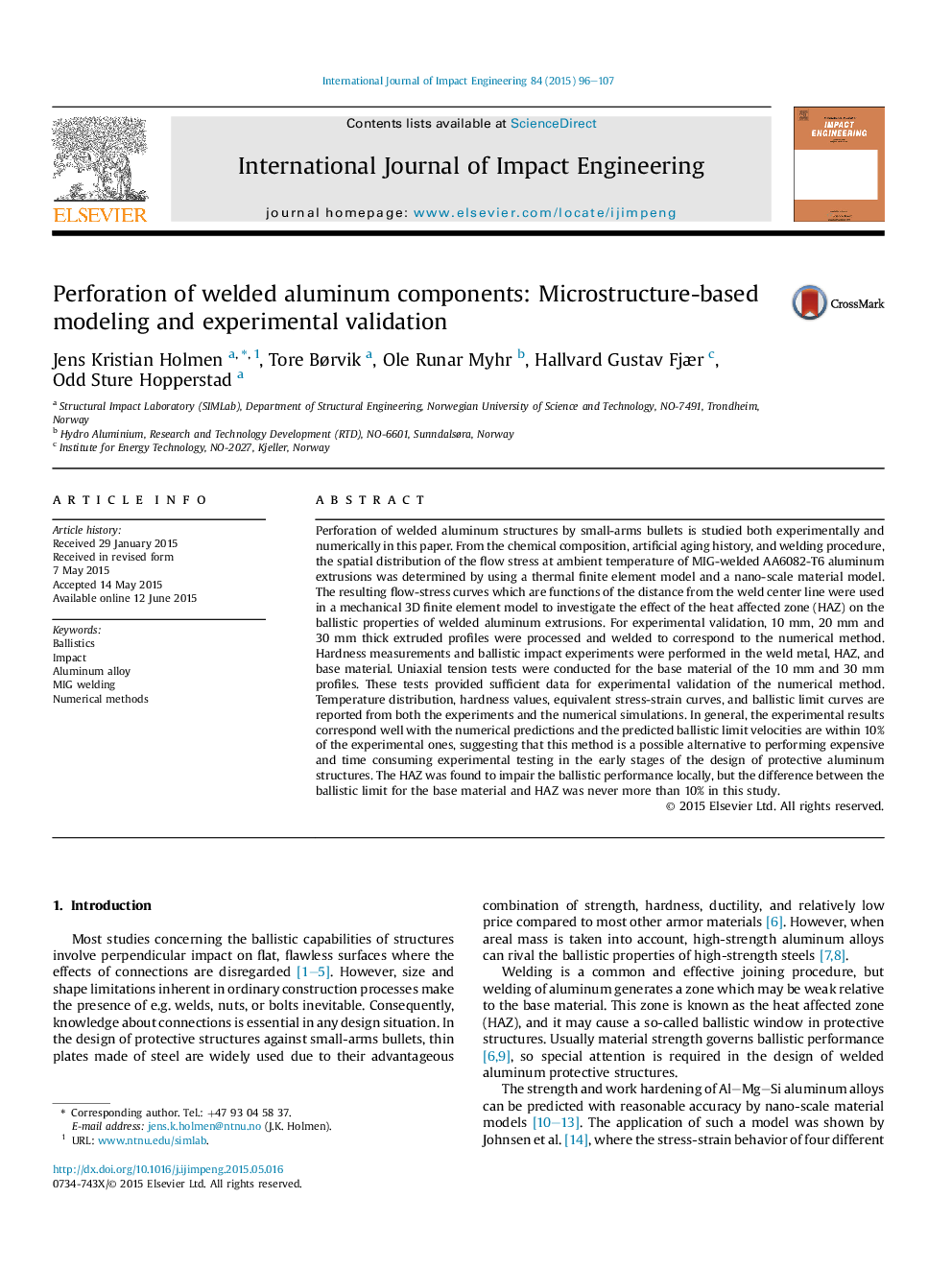| کد مقاله | کد نشریه | سال انتشار | مقاله انگلیسی | نسخه تمام متن |
|---|---|---|---|---|
| 779242 | 1464067 | 2015 | 12 صفحه PDF | دانلود رایگان |
• Ballistic impact tests are carried out on MIG-welded AA6082-T6 extrusions.
• Numerical simulations are completely independent from the experimental data.
• Welding is simulated using a thermal finite element model.
• A nano-scale material model is used to predict the spatial variation of flow stress.
• Numerical predictions are generally in excellent agreement with the test data.
Perforation of welded aluminum structures by small-arms bullets is studied both experimentally and numerically in this paper. From the chemical composition, artificial aging history, and welding procedure, the spatial distribution of the flow stress at ambient temperature of MIG-welded AA6082-T6 aluminum extrusions was determined by using a thermal finite element model and a nano-scale material model. The resulting flow-stress curves which are functions of the distance from the weld center line were used in a mechanical 3D finite element model to investigate the effect of the heat affected zone (HAZ) on the ballistic properties of welded aluminum extrusions. For experimental validation, 10 mm, 20 mm and 30 mm thick extruded profiles were processed and welded to correspond to the numerical method. Hardness measurements and ballistic impact experiments were performed in the weld metal, HAZ, and base material. Uniaxial tension tests were conducted for the base material of the 10 mm and 30 mm profiles. These tests provided sufficient data for experimental validation of the numerical method. Temperature distribution, hardness values, equivalent stress-strain curves, and ballistic limit curves are reported from both the experiments and the numerical simulations. In general, the experimental results correspond well with the numerical predictions and the predicted ballistic limit velocities are within 10% of the experimental ones, suggesting that this method is a possible alternative to performing expensive and time consuming experimental testing in the early stages of the design of protective aluminum structures. The HAZ was found to impair the ballistic performance locally, but the difference between the ballistic limit for the base material and HAZ was never more than 10% in this study.
Journal: International Journal of Impact Engineering - Volume 84, October 2015, Pages 96–107
